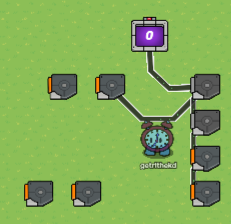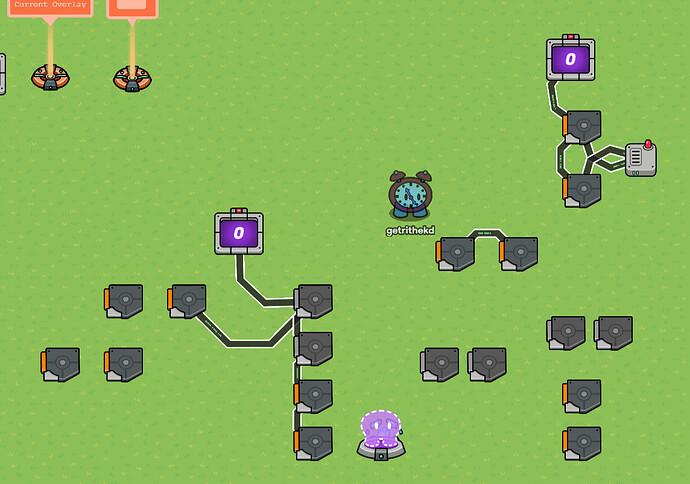this guide will show you how to make a mechanical AND and OR gate. (AND and then OR):
The AND Gate
First, let’s define an AND gate. An AND gate take in 2 true/false values and gives us a true values if both of the inputs are true and gives us false if at least one if false. This is pretty easy to implement with trigger chains. If even one is inactive in the chain, then the chain won’t complete. So we have the concept, now let’s implement it!
First, we need our inputs. I’m using trigger activation states. You’ll need to convert your true/false into trigger activation states to use this. Let’s take a look at the system I made:

The 2 triggers in the bottom left is the data that is encoded into. Make those 2 triggers receive on “Start AND Gate” and have a delay of .1. The first should broadcast on “Set Bool 1” when its triggered. The second should broadcast on “Set Bool 2” when its triggered. Make the bottom right trigger broadcast on “Start AND Gate” when its triggered. You will start your AND gate using this trigger. if you want to say it. Wire it to the trigger above it. This trigger should have a delay of .15. Next, make the trigger above that (grey left side) not active on game start. Make it deactivate on “Start AND Gate” and activate on “Set Bool 1”. For the people who actually read a guide before saying nice guide. Do the same with the trigger above that but with “Set Bool 2”. Wire the top one to a trigger that does stuff for the true case. I used a counter for testing purposes.
Fun Fact
If the trigger is inactive, the orange part of the trigger will turn grey. Also, wires also run clockwise, so you can tell the direction it runs without having to see the little line move.
Now, make the trigger all the way to the top left be triggered by “Start AND Gate”. It should have a delay of 1. It should trigger the trigger to its right. That trigger should be the one for “False” and should be deactivated by the true case.
WIP
